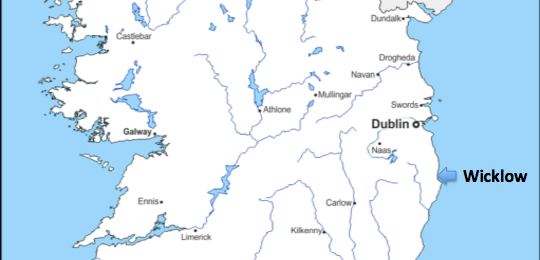
A European Journey #11 – Wicklow (Ireland)
Patrick and the transformation of Ireland
After Ukraine last week, we will visit the Emerald Island, that is Ireland, and in particular the town of Wicklow.
This town is 50 km (30 mi) south of Dublin and has nearly ten thousands inhabitants. In fact it is located at the shore of the Irish Sea and at the foot of the Wicklow mountains, so it won’t be hard to imagine the beauty of the region.
We could visit Saint Patrick’s Church or drink a good Irish beer in one of the local pubs. But instead, let’s visit the harbour. Actually, it is a marina just at the mouth of the river Vartry.
Wicklow is the English name of the town. In the Irish language however, it is called Cill Mhantáin, which means “the church of the toothless”. This indicates that the city might have developed around a church. But what is the reason behind the mention of the toothless?
The story behind this name is linked to Patrick, the apostle to the Irish. It is said that when Patrick returned as a missionary, he was accompanied by several men and he tried to dock on a beach nearby. Hostile residents then attacked them, however, causing one of his friends to lose his front teeth. The man became known as Manntacht (the toothless). But Manntacht didn’t lose courage however and later returned right here to plant a church.
So that’s for the local story! Even if the story is impossible to verify, it points to another one. You may have already guessed that I want to talk to you about Patrick of Ireland.
Patrick was probably born in England near the modern-day town of Daventry. He was raised in a Christian and financially comfortable family. However, he lived in a time of great instability all over Europe. In Britain, frequent Irish raids used to sow panic. When he was about 16 years old, Patrick was captured during one of those raids. As a slave he took care of a swineherd for six years, in Antrim (modern-day Northern Ireland). It was during this time that Patrick’s faith in God came alive.
One day he heard a mysterious voice proclaiming: “you are going home. Look, your ship is ready.” Patrick obeyed. He left his place of slavery and probably walked to the South of Ireland, near Rosslare from where the ferries still sail to Britain.
When Patrick asked the sailors if he could join them, they suspected that he was a fugitive (and rightly so). Patrick drew back to pray, after which the sailors called him to come aboard.
After some years in Gaul (modern-day France) Patrick managed to finally come back to his family in Britain. But his stay would be short. Patrick had in fact a second supernatural experience. This time he saw an Irishman in a vision telling him: “We beg you to come and walk among us once more”.
This vision, similar to the Macedonian call of the Apostle Paul, didn’t leave him. He then decided to go back to Gaul, probably to the abbey of Lérins (on an island in the Mediterranean sea near Cannes). This monastery, as well as other places visited through the years helped train him for his future task in Ireland.
There are several locations in Ireland that are believed to be Patrick’s landing place on his second journey, and the mouth of the river Vartry is one of them.
For the next thirty years, he accomplished a mission that would lead to the conversion of the entire island.
The Irish founded monasteries with an oratory (for prayer) in the centre and huts for individuals as well as families. The people gathered regularly together for prayer and meals. These monasteries, which were in fact villages, multiplied quickly all over the island.
Nevertheless, the conversion of the Irish didn’t cause them to abandon old habits quickly. Wars between tribes continued, sometimes even involving monasteries. The rise of Christianity didn’t even eradicate pagan traditions. However during Patrick’s life, slavery – of which he had been a victim – was totally abolished.
The conversion of the Irish would eventually have a huge influence on the whole of Europe.
Firstly, literacy transformed these old Irish warriors into scholar monks. They transcribed biblical texts as well as Greek and Roman classics, which actually saved many manuscripts from destruction at the time of the Germanic invasions. Their survival to this day is largely thanks to their work.
Secondly, the next generations of the Irish left the island to evangelise Britain and the rest of Europe. After the fall of the Roman Empire, they thus brought the Gospel to the Germanic tribes.
Their work established the foundations for the rebuilding of Europe in the Middle Ages. What would Europe look like today without the Irish contribution?
So, in view of all this (and if consuming alcohol is not a problem for you), how about drinking a good Irish beer in memory of Patrick, the apostle to the Irish?
See you next week somewhere else in Europe!
Cédric Placentino
Schuman Centre convener for Italian and French Europe
Follow A European Journey here.
Map: https://d-maps.com/index.php?lang=en

This Post Has 0 Comments